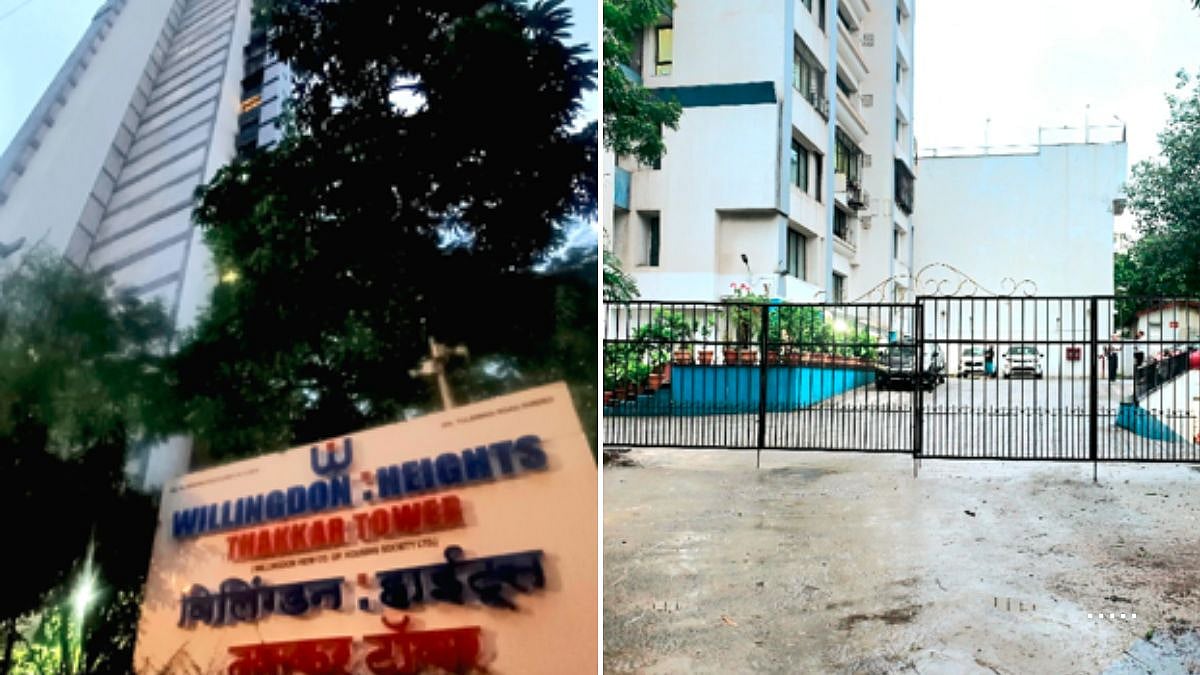Like other airports in cities across India, Mumbai’s too has dozens of buildings around it, in the very pathway of aircraft taking off and landing. This has come to the fore in the wake of the horrific plane crash in Ahmedabad last week that killed 241 on board, there was a lone survivor, and nearly 30 on the ground, including trainee doctors in the BJ Medical College hostel. Why were buildings in such a close vicinity of the airport and its runway? asked many. It’s a question no one usually pays attention to at other times.
Anyone who has landed in Mumbai is familiar with the proximity of slum tenements and low buildings in Kurla as the craft descends. The colours of clothes hung out to dry on windows are clear as daylight. Some are presumably authorised, others unauthorised.
But it would be a mistake to see only the slums as unauthorised, which is typical of the middle classes and well-to-do folks, sometimes even the authorities, as the case in the Bombay High Court showed.
About a week after the Ahmedabad crash, the Maharashtra government told the court that portions of seven buildings that had flouted height norms had been demolished, including upscale ones in Santacruz.
On a petition filed by advocate Yeshwant Shenoy in 2019 about the high-rises creating “obstruction” and causing threats to the take-off and landing of aeroplanes, the Bombay HC had directed the Mumbai suburban collector in 2022 to remove 48 structures—unauthorised floors of buildings, water tanks, antennas, iron pipes and so on—that blatantly flouted rules for building height in the vicinity of the airport.
The government affidavit, this week, told the court that it had directed the Brihanmumbai Municipal Corporation and the planning authorities to issue notices and remove the rest.
The skullduggery is breathtaking here: the BMC presumably issued the requisite permissions; no-objections must have been issued by the airport authorities, which were violated; construction was done years ago; the issue was taken to the court six years ago; the 48 structures were identified three years ago but there’s only one directive from the state government to the BMC to take action. What a joke this is!
The Mumbai airport handles roughly 950 aircraft movements every single day. Should an accident or a near-miss occur, who is going to be held accountable both for allowing the constructions that should not have been there in the first place and then for dragging their feet over punitive action for more than six years? Are we, the people who watch this joke play out, to understand that a bunch of officials who allow the flagrant violations and those who quietly file affidavits even as unauthorised structures risk lives will live peacefully and make merry? They must be held accountable.
This accountability has been sorely missing in the Thane case too, taken right up to the Supreme Court, in which demolitions apparently resumed today after the SC came down strongly against the set of 17 buildings. The petitioner, one of the affected from the nearly 400 families in these buildings in Shil, on the Diva-Mumbra Road, was dismissed by the Apex court bench of Justices Ujjal Bhuyan and Manmohan. The judges refused to interfere with the Bombay HC order, remarking that “there was no rule of law” and these buildings possibly had underworld connections.
Should the petitioner not have got a hearing? What was his fault or that of hundreds of other families? The petitioner highlighted their plight, caught in the web as they were that builders and officials weaved in connivance; they did not know whether the apartments they bought were in authorised buildings or on unauthorised land.
The famous Campa Cola compound case in Worli, Mumbai, comprising a set of upscale buildings, was also fought on similar lines in the past decade. This is a genuine issue. How are individual buyers to know the legality? Even if they demand to see that everything is in order, the builders rarely comply; even if they access all documents, it is difficult for laypeople to catch illegalities in land and property transactions.
Builders would not dare to sink in their money unless they were assured in some way that they would be safe from the seemingly long arm of the law, which can only be officials in the know. However, once the illegalities have been brought to light and action has to be taken, the price is paid by the last and weakest link in the chain—the end user.
Why is it that every officer and inspector who allowed, perhaps even encouraged, for a consideration, the unauthorised construction goes scot-free? Forget paying a price for their acts of omission and commission; even their identities are not known to people. This must change. In every case, the identities of all officials who allowed the unauthorised construction must be brought before the courts. It would be a start, at least.
The scale of unauthorised construction in our cities is enormous. Between April 2024 and March 2025, the BMC itself identified 3,343 properties in the city that were constructed or altered without due authorisation and slapped a 200 per cent penalty property tax on them, amounting to Rs 393 crore. Many will pay and keep the unauthorised portions intact.
What is the message being sent out? The Thane Municipal Corporation has, apparently, identified nearly 770 unauthorised buildings. In the wake of the demolition drive, some may even be razed, but some officials in the very TMC allowed them to rise. They deserve to pay a penalty, not only the often-unsuspecting end-buyer who loses it all.
Courts coming down strongly against unauthorised construction and ordering demolition is good optics but not the solution here. Creating a civic framework in which such construction is untenable and non-viable is part of the process; the other is to make every signatory on the files accountable and publicly shamed; that might act as a deterrent. Now for the BMC to act against the unauthorised structures in all the identified buildings near the Mumbai airport. Don’t hold your breath; this may take years.
Smruti Koppikar, senior journalist and urban chronicler, writes extensively on cities, development, gender, and the media. She is the Founder Editor of the award-winning online journal ‘Question of Cities’ and won the Laadli Media Award 2024 for her writing in this column.











